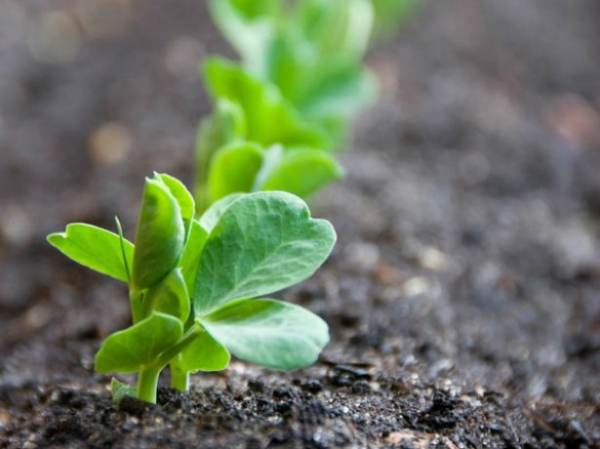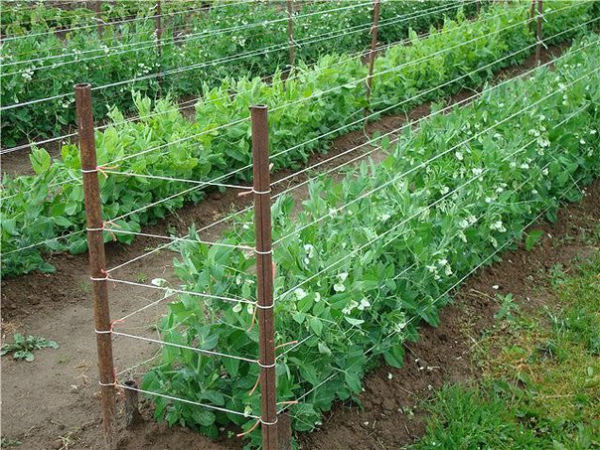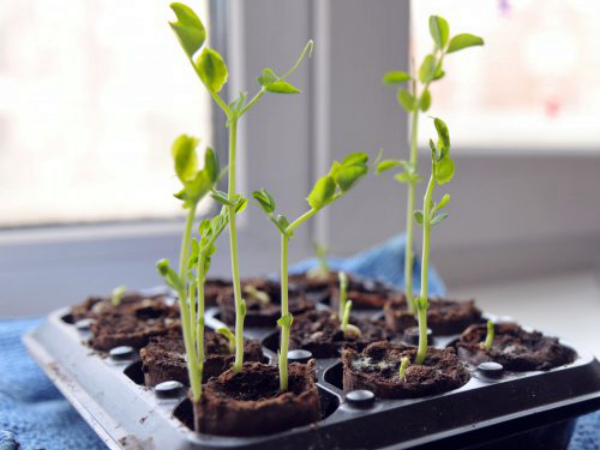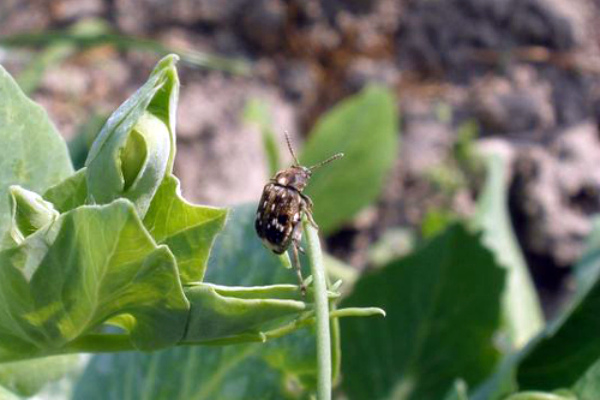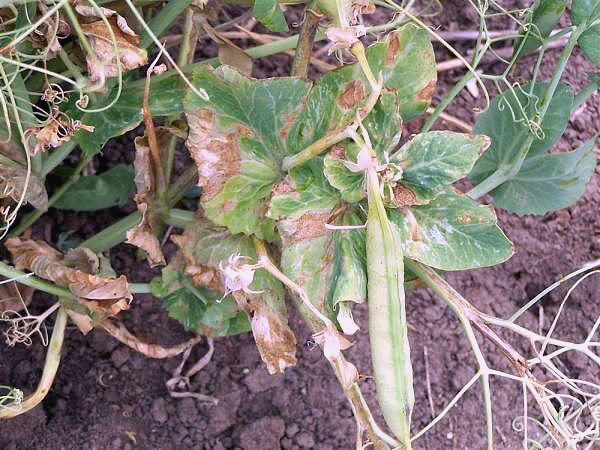How to grow peas correctly: tips and tricks
Content
Growing technology
Growing peas from seeds is not difficult, in some ways even pleasant. Despite the increased requirements for care and maintenance, the technology of this process is not sophisticated. The first step is to take care of the composition of the soil. When planting sprouted peas in the ground on the site, you should evaluate how hot it will be in the beds - peas do not tolerate heat, preferring a warm, but shaded place.
Soil and seed preparation
Preparing the soil for both germinating seeds and planting on the site is a very important stage. It is best to fertilize the soil with lime, potassium and double superphosphate. How much fertilizer do you need? Take 5-7 g of each per 1 square meter. meter. The application of organic fertilizers should be carried out in late autumn when digging a site.
For growing seeds, light fertile soil is suitable, without excess nitrogen.
Keep in mind that the root system of peas grows deep enough; care should be taken not to be damaged by insects, for example, a bear or yourself when loosening the earth.
Planting peas is best after cucumbers, pumpkins, potatoes or cabbage. At the same time, after green peas, absolutely any crops can be planted - they will automatically receive nitrogen-rich soil for rapid growth.
Initially, the seed preparation technology consists in the selection of peas. Throw away spoiled, broken, too small peas - nothing good will grow out of them. Heat quality material in the oven (temperature should be 40-50 ° C) for 2-3 minutes. Dilute 1 g of boric acid in 5 liters of warm water, place in the pea solution for 6-8 minutes. After that, it is necessary to dry the seed, and then proceed to planting in the garden.
Another option for seed preparation is sprouting peas. To do this, preheated seeds are wrapped in a damp cloth moistened with a solution of boric acid or potassium permanganate.
Seed pretreatment helps plants more easily resist disease and insect pests.
Sowing
Wait for stable warm weather, when the temperature does not drop below + 12-14 ° C, and the soil is warmed up enough so that the seeds and sprouts of peas do not die from the cold. For example, the planting of green peas in Ukraine begins in mid-April.
Form furrows 6-7 cm deep on the bed so that the distance between them is about 45-50 cm. About a week before planting, place rotted manure in the furrows, mixing it with wood ash so that the depth of the bed becomes 34 cm. low-growing peas are placed in the furrows at 40-50 peas per 1 square meter. meter. If you chose a tall variety, then reduce the number of peas to 18-20 pieces. Sprinkle soil over the beds, water liberally, and then cover with foil.
However, you can also grow green peas at home.Pea preparation technology and soil composition are identical. The only difference is in the type of culture - sugar varieties are often grown at home.
Fill the boxes with loose, fertilized soil, place the peas in it, deepening by 3 cm and keeping the gaps of 5 cm.In the first two weeks, you can feed the peas with a nitrogen solution. The rest of the time, peas grow well with moderate watering and a sufficient amount of light and heat. Equipment that will be needed during cultivation - net or ropes to tie the peas.
Video "About the benefits and cultivation of peas"
This video is about the beneficial properties of peas, as well as how to grow a crop on your land.
Care
You need to take care of the peas from the first minutes of planting in the ground and do it right. The technology is simple: cover the beds or container with plastic wrap to create a greenhouse effect.
A stable temperature is very important for the peas. So the plant will quickly grow, actively increasing the green mass. Prepare a grid or posts ahead of time; pea shoots will need to be tied to them. Thus, you will prevent the plant from rotting and tangling of the shoots.
From the very first days, keep the beds covered with a loose cloth or film, then cover the tied bushes with it, so as not to attract birds who like to feast on peas.
Water and loosen the soil regularly so that the roots of the peas, which lie deep in the ground, receive the necessary amount of fresh air and moisture. Active watering is necessary for the culture during the flowering period, while the amount of water should be increased up to 1 bucket per 1 sq. meter landing.
Peas do not require frequent feeding, only two are enough for the entire growth period. The first is carried out when the shoots grow up to 10-12 cm.
It is best to use a mixture of potassium and phosphorus to enhance vegetative processes in stems and leaves. If the summer is dry, you can use a yeast solution that will help the plant not only actively develop, but also cope with the high air temperature.
As soon as the first blades are formed, this usually happens one and a half to two weeks after flowering, they need to be cut off. The fact is that the longer they stay on the bush, the less new ovaries will form. Tear off the pods carefully, holding the shoots and being careful not to take away the live part of the peas.
Carefully make sure that there are no weeds in the beds - they clog the soil and prevent the roots of green peas from eating normally. Moreover, weeds are very often home to harmful insects and pathogens.
Disease and pest control
How many plants - so many diseases. Green peas are susceptible to many diseases, and also often become a delicacy for a variety of insects. Therefore, before growing it on your site, you should learn how to protect or cure the plant.
The pea moth causes great harm to plantings. Small caterpillars easily survive the winter cold, and then turn into butterflies, laying a large number of eggs on the lower part of the plant's leaves. The cycle repeats annually, especially if you are not following the crop rotation or removing residues from the beds. The favorite plants of the moth are mid-ripening and late-ripening pea varieties. Therefore, if you decide to grow them, then get ready for a war with gluttonous insects.
To combat the pea moth, insecticides are used, which are used to treat the soil in autumn. In the spring, the beds are sprayed with infusion of tobacco, burdock and celandine.
Another pest is the pea weevil. The insect lives in the seeds, gnawing at itself a cozy rookery inside the pea. It is quite easy to determine which seeds are spoiled: soak the peas in a strong salty solution, mixing 30 g of salt with 1 liter of water.Floated peas - are struck by a weevil, they need to be thrown away, and those that have settled to the bottom - rinse, dry and prepare for planting.
Pea cyst nematode leads to slower growth of peas, a general slowdown of vegetative processes. In a diseased plant, leaves turn yellow and fall off, roots develop poorly and wither. In the first period of the development of the disease, larvae appear on the leaves and stems, by the beginning of summer - nematodes, and if the plant has not died from exhaustion by this time, white cysts form in the middle of summer. The insect promotes the development of root rot. To combat the nematode, insecticides, soap solution, infusion of tobacco ash and wood ash are used. It is important to tie the peas as soon as they reach 14-15 cm in length.
Among the pathogens to which green peas are susceptible, the most to be feared are downy mildew, gray and root rot, olive mold, mosaic.
Downy mildew is one of the most common fungal diseases in plants. Symptoms of the disease: white, less often yellow, round spots with a fuzzy outline on the upper part of the leaf plate; gray bloom on the lower part of the leaves. To cope with downy mildew, it is necessary to remove the infected parts of the plant (or the entire plant), treat it with fungicidal preparations, for example, Topsin-M. It is worth using a soap and yeast solution.
Gray rot affects the entire plant, covering them with dark green spots, on which a gray bloom develops, and then black spots. Over time, the affected parts of the peas dry out, acquiring a brown color. Dry weather contributes to the spread, and high humidity and watering with cold water contribute to active reproduction. For preventive and therapeutic purposes, it is necessary to treat the plant with fungicidal preparations and be sure to remove the infected areas.
The disease of root rot leads to the fact that the leaves of the peas turn yellow, curl up into a tube and die off within a few days. The vegetative processes in the plant slow down, it withers and, if untreated, dies. With high humidity, yellow spots on the leaves are covered with a pale pink bloom. It is necessary to treat root rot with the preparations "Zircon" and "Fitosporin".
When infected with olive mold, the peas become covered with a dark olive-brown bloom. Very often, the disease enters the plant, forming black ulcers throughout the stem. For treatment, a solution of Bordeaux liquid is used, as well as the drug "Zircon".
Ordinary mosaic appear mainly on the leaves of peas - light streaks form, from which yellow spots "spread" soon. Leaves stretch in length, vegetative processes slow down. For treatment on the site, a solution of Bordeaux liquid is used, as well as the fungicidal preparation "Topsin-M".
Video "Pests of peas"
This video shows what pests can be found on pea plantings and how much harm they cause.



